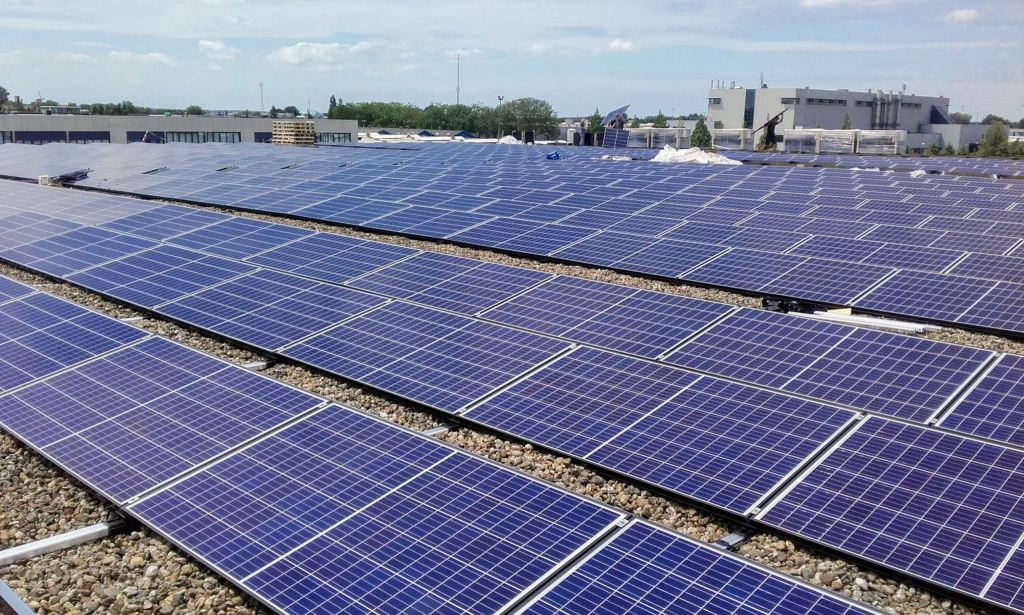
WARSAW, 11 December 2018 – Now the Climate Change Conference is held in Katowice, the question may be raised how Polish companies are working for a greener future. If anyone would know, it would be Agnieszka Kozłowska-Korbicz, who invented and ran a GreenEvo Programme in the Polish Ministry of Environment in 2008-2015. Currently, she is Director of Energy and Environmental Sector in CEC Government Relations. We spoke with her at the time of the Climate Change Conference in Katowice, Poland.
“We are going to talk about Polish green technologies? I have a story for you. Once one of the municipalities in Poland needed to buy solar panels to a hospital. They wanted to buy the best one available on the market. What do you think, which one did they choose?”
A German one, I guess.

“Yes, German because for an ordinary Pole German technology is a good technology. When they bought it, it turned out that it was, in fact, Polish technology: invented in a Polish company, produced in Poland but sold in Germany under a German brand. This story shows that there are a few sectors where Polish green innovative companies are really strong.”
Could you give me some examples?
“The first example is solar panels. In Europe, we have the highest standards and the best products. Companies such as Hevalux, Sunex, En Sol and others sold their products under German and French brands. It was possible only because they had great quality and great price.
Another sector is low carbon construction. One of the most exponential players on this market is a Polish company IZODOM 2000. They’ve developed their own ecological breezeblocks and use this technology to build passive houses all over the world. They are able to build not only a passive small house with a design that may be appropriate for the pickiest clients but also an eight-storey office building.
Another example from Poland is an M3system company. They have a very interesting construction technology: first, they cut huge structures out of the polystyrene, as huge as a part of the house, next they glue them together. It’s a little bit like they build a house as if it is a jigsaw puzzle. Their constructions are light, wind and storm resistant and very stable because they can be easily stabilised at the bottom.”
Are they liveable in our climate?
“It is perfect for any climate, even an extreme one. If it’s cold outside, it is warm inside because thanks to their technology, heat doesn’t leave the home. The other way round, when it’s hot outside and pleasantly cold inside due to air conditioning, the heat doesn’t go inside the building.
Another sector is energy efficiency. A leader both in Poland and abroad is a company called Promar. They specialise in energy efficiency in public buildings. What they do is that they enter the building, do the audit, then they install their sensors in the building, connect all utilities and they manage them remotely, so the use of water, electricity etc. is lower and suit to this what is happening in the building. For example, in the afternoon, when people leave the building, the temperature inside drops. In the morning, when people come to work, the temperature rises. The temperature can even drop during the day in a single office if a person leaves it for longer. At the end of the month, the utility bill is much lower.”
Is there anything else?
“The water treatment plants and technologies to reduce water usage should also be mentioned. In Poland, we started to build sewage farms later. This caused that our technologies are more modern and better. It was a knowledge transfer from the West. After it was adopted to our local conditions, our technology surpassed the western ones.
I’ll give you an example from Beijing. Before the Olympics in 2010, the Chinese authorities wanted to build a sewage plant and water treatment plants in the Olympic village. Many companies from all over the world applied for this project, but all of them wanted to build the infrastructure from scratch. That would be an enormous investment, huge cost and it would take time, which the Chinese didn’t have. The Chinese chose the offer made by a Polish firm Biogradex. The Polish company just installed a few modern solutions and it modernised the whole area.
Polish strength is also hazardous waste treatment. For example, there is a company Qenergy that can produce energy from everything they get in their hands – starting from a plumage to wood waste.”
They simply burn it all?
“Not really, because they treat each material differently. Most importantly, they do not close themselves off from one type of waste but they try all types of waste to achieve the highest parameters of energy.
Also, a number of interesting initiatives are emerging in the electromobility sector. I’m not only talking about technical solutions but also about innovative ideas such as e-car sharing. Recently Tauron (a Polish energy holding company) and ING bank have launched common carsharing. Ultimately it will function that during the day the cars are driven by Tauron and ING managers and after working hours cars are available to the public. Cars have their “second life” in the city and everyone can drive them.”
Why are those sectors the most innovative?
“There are two reasons.
When it comes to some sectors such as water treatment it is a result of transformation. Water treatment is a good example. Due to the communism, Poland was cut off from technologies for a long time. When the first credits from the West were available, companies were buying western technologies but they had to be adapted to the specific Polish conditions. This is the reason why our technology made a huge leap forward and many companies have developed their own technologies.
In case of solar panels and all these solutions that can be done yourself, it is proof that “Poles can do it!”. These are our “garage stories”: dad-engineer invented a device, he hired the first son, after he hired another son. When their solution was working they were hiring other workers and finally, it turned out that their firms are developing and have potential. To a large extent, Poland’s accession to the European Union helped companies a lot because it was easier for them to sell on western markets.”
Where are the clients for the Polish green technologies?
“The majority of companies sells abroad. The Polish market is not ready for such solutions and there is not enough incentives for an ordinary Pole to buy such innovations.”
What about incentives for companies to develop green technologies?
“Still, there are not enough of those incentives. Of course, there are so-called thermomodernization programmes and programmes to increase energy efficiency but I find them too small to revolutionise the entire sector. Maybe the energy prices will force households to move towards RES, this scenario appears to be plausible.
Of course, governmental agencies such as the National Center For Research and Development or The National Fund for Environmental Protection and Water Management run dedicated programmes but they lack structural approach. For many years I ran GreenEvo. It was an Accelerator for Green Technologies and its aim was to support the most innovative and green solutions. Unfortunately, the programme was closed in 2015. Now there are attempts to re-launch it but we have been waiting for results for a year. Unfortunately, there aren’t any. The Polish Ministry of entrepreneurship and technology tries to find solutions to help this sector, but still, this exists only on paper. Systemic support is missing. In my view, a vision is also missing. There are many different programmes for start-ups but a result of such programmes is that another app, rather than an industrial technology, could solve the environmental problem.
I think companies make more use out of the EU support and the Horizon 2020 together with foreign partners because it gives them a new experience and they can do projects across Europe.”
Innovations you’ve just mentioned have been developed over the past years. What about the future? Do the companies still want to follow these paths or can you see other directions?
“Speaking about RES, the important thing is the progressive availability and even-lower price. It is important both for households and small local initiatives.
In the project of Poland’s Energy Policy, the emphasis is placed on photovoltaic. Thus this sector is likely to grow faster. Certainly offshore and technologies relating to wind farms at sea are going to be developed. We can see an enormous trend in electromobility. Recently huge factories of fuel cells for electric motors were built in Poland. The Koreans see Poland as a place to develop electric car technologies. One might say that Poland can be a bridge for Asian companies to enter the European market.
Another important branch will be hydrogen technologies. Many Polish companies are interested in this issue. For example, lately, JSW ( Polish coal mining company ) has been working out how to use hydrogen from mine and to take up the new business challenge to create a new industry branch. These are important steps that are being taken by our entrepreneurs and one should support. Briefly speaking, a raw material that was supposed to be a waste, is to be used in the production of electric cars.”
Agnieszka Kozłowska-Korbicz – She invented and ran a GreenEvo Programme in the Polish Ministry of Environment in 2008-2015. It was a competition for the best Polish green technologies and an acceleration programme. Currently, she is Director of Energy and Environmental Sector in CEC Government Relations


